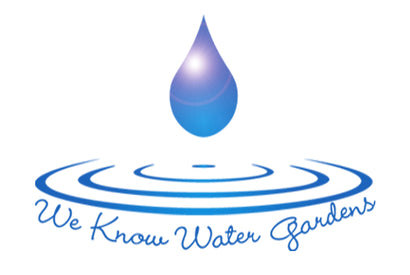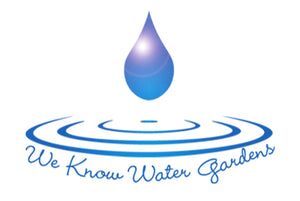The Dangers of growing Duckweed: How Lemna minor Can Harm Your Australian Pond

Duckweed may seem harmless, floating effortlessly on the surface of your Australian pond, but be warned, there are hidden dangers lurking beneath its delicate appearance. In particular, Lemna minor, a common species of duckweed, can wreak havoc on your aquatic ecosystem.
This article identifies the specific ways duckweed can harm your pond in Australia, from depleting oxygen levels to disrupting the balance of nutrients.
By understanding the hidden dangers of duckweed, pond owners can take proactive measures to prevent its spread and protect their aquatic ecosystems. From effective management techniques to selecting suitable biological controls, this article will provide you with the information you need to maintain a healthy and thriving pond.
So, if you're concerned about the impact of duckweed on your Australian pond, keep reading to discover how duckweed can harm your aquatic environment and find actionable solutions to mitigate its negative effects.
The ecological role of duckweed lemna minor in Australian ponds
Lemna minor, is in Australia commonly referred to as Duckweed, Common Duckweed and Lesser Duckweed. It is a small floating plant that thrives in calm freshwater environments. Its presence in Australian ponds is not uncommon, and it plays a significant ecological role in these habitats. Duckweed acts as a natural filter, absorbing excess nutrients such as nitrogen and phosphorus from the water. In moderation, it can help maintain a healthy balance in the aquatic ecosystem but unfortunately it is such a vigorous weed that it is best to avoid this plant. Even if you have never had duckweed in your pond before it is important to keep any eye out for it. While it reproduces asexually through a process known as budding, birds can often bring it to your pond as the fine roots can be transported on their plumage or feet.
However, when duckweed populations grow out of control, they can pose serious threats to the overall health of the pond. The rapid reproduction rate of duckweed allows it to rapidly cover the water surface, blocking sunlight from reaching the submerged plants and algae below. This can lead to a chain reaction of negative effects, disrupting the delicate balance of the ecosystem.
The potential dangers of duckweed overgrowth in ponds
 The potential dangers of Duckweed (Lemna minor) overgrowth in Australian ponds are a growing concern for aquatic ecosystems. Despite its seemingly innocuous appearance, Duckweed has the capacity to rapidly multiply and form dense floating mats on the water surface, obstructing sunlight and hindering the natural processes crucial for the health of ponds. This overgrowth poses a threat to native aquatic plants by outcompeting them for sunlight and nutrients, leading to a decline in biodiversity. Additionally, the thick Duckweed mats can create stagnant conditions beneath, promoting the growth of harmful bacteria and depleting oxygen levels in the water. Such adverse effects can result in an imbalance within the ecosystem, negatively impacting fish populations and other aquatic organisms. Effective management strategies are essential to mitigate the potential dangers associated with Duckweed overgrowth and maintain the ecological balance of Australian ponds.
The potential dangers of Duckweed (Lemna minor) overgrowth in Australian ponds are a growing concern for aquatic ecosystems. Despite its seemingly innocuous appearance, Duckweed has the capacity to rapidly multiply and form dense floating mats on the water surface, obstructing sunlight and hindering the natural processes crucial for the health of ponds. This overgrowth poses a threat to native aquatic plants by outcompeting them for sunlight and nutrients, leading to a decline in biodiversity. Additionally, the thick Duckweed mats can create stagnant conditions beneath, promoting the growth of harmful bacteria and depleting oxygen levels in the water. Such adverse effects can result in an imbalance within the ecosystem, negatively impacting fish populations and other aquatic organisms. Effective management strategies are essential to mitigate the potential dangers associated with Duckweed overgrowth and maintain the ecological balance of Australian ponds.
Impact of duckweed on aquatic ecosystems and Australian native species
One of the most significant dangers of duckweed overgrowth is its impact on aquatic ecosystems and native species. As the duckweed covers the water surface, it restricts the amount of sunlight available for other submerged plants and algae to photosynthesise. This deprives these organisms of a vital energy source and can lead to their decline or even death. Subsequently, this reduction in submerged vegetation can disrupt the food chain, affecting Australian native fish, invertebrates, and other organisms that rely on these plants for food and shelter.
Additionally, the dense mats of duckweed can create a physical barrier, preventing the movement of larger organisms such as turtles and waterfowl. These animals may struggle to find suitable feeding grounds or nesting sites, impacting their overall reproductive success. As a result, the overgrowth of duckweed can have cascading effects on the entire ecosystem, leading to a decline in biodiversity and ecological imbalance.
Negative effects of duckweed on water quality and oxygen levels
Duckweed overgrowth also has detrimental effects on water quality and oxygen levels. As the duckweed covers the water surface, it limits the exchange of gases between the atmosphere and the pond. This can result in reduced oxygen levels, particularly during nighttime when photosynthesis is not occurring. Low oxygen levels can be harmful to fish and other aquatic organisms, leading to stress, suffocation, and even death.
Furthermore, the decomposition of excess duckweed biomass can contribute to the depletion of dissolved oxygen in the water. As the duckweed dies and decays, bacteria and other microorganisms break down the organic matter, consuming oxygen in the process. This further exacerbates the oxygen depletion problem and can create a vicious cycle of deteriorating water quality.
Alternative pond plants to grow instead of duckweed
 If you are looking for a similar plant that is not considered a weed, consider growing Brahmi for a similar visual effect.
If you are looking for a similar plant that is not considered a weed, consider growing Brahmi for a similar visual effect.
Brahmi (Bacopa Monnieri) is a relatively low-maintenance plant that requires minimal pruning. Brahmi will grow well in the pot and floating pond plant ring in a water feature or pond. It can also be submerged to a depth of 20cm in your pond. In contrast to duckweed, Brahmi will act as an oxygenating pond plant when grown submerged. Check out other floating pond plants here that are a much better alternative to grow in your pond or water container.
Risks to recreational activities and human health
Beyond its ecological impact, duckweed overgrowth can also pose risks to recreational activities and human health. Thick mats of duckweed can hinder the enjoyment of water-based activities such as swimming, boating, and fishing. The dense coverage of the water surface can make it difficult to navigate, entangling fishing lines and impeding the movement of watercraft.
Moreover, duckweed can harbor bacteria, parasites, and other pathogens that can be harmful to human health. Contact with contaminated duckweed can lead to skin irritations, infections, and gastrointestinal illnesses. It is essential to exercise caution and practice proper hygiene when coming into contact with duckweed -infested waters.
Preventing and controlling duckweed infestations in ponds
To protect your Australian pond from the harmful effects of duckweed, it is crucial to take proactive measures to prevent and control its infestations. Here are some effective management strategies for pond owners:
Effective management strategies for Australian pond owners
- Physical removal: Regularly skim the surface of the water to manually remove excess duckweed. Use nets, rakes, or even vacuums to control the population. Dispose of the collected duckweed away from the pond to prevent reinfestation.
- Aeration: Improve oxygen levels in the water by installing aeration systems such as fountains, diffusers, or waterfalls. The increased circulation and oxygenation can deter the growth of duckweed and promote a healthier pond environment.
- Nutrient management: Control the nutrient levels in the water by reducing the input of fertilisers or other organic matter. Excessive nutrients contribute to the rapid growth of duckweed. Regular water testing can help monitor nutrient levels and guide appropriate management practices.
- Biological controls: Introduce natural predators or competitors of duckweed to help control its population. Fish species such as grass carp or koi can feed on duckweed, keeping its growth in check. However, it is crucial to research and consider the potential impacts of introducing non-native species into your pond.
The importance of early detection and monitoring
Early detection and monitoring are essential in preventing duckweed infestations from getting out of control. Regularly inspect your pond for the presence of duckweed and take immediate action if you notice any signs of overgrowth. By catching the problem early, you can implement effective management strategies before the duckweed population becomes overwhelming.
Regular monitoring can also help you identify potential underlying issues such as excessive nutrient levels or imbalances in the ecosystem. By addressing these problems at their root, you can prevent duckweed from establishing a foothold in your pond.
Balancing the benefits and risks of duckweed in Australian ponds
While duckweed can play a beneficial role in Australian ponds by helping to filter excess nutrients, its overgrowth can have severe consequences for the aquatic ecosystem. From disrupting the balance of nutrients to depleting oxygen levels and posing risks to human health and recreational activities, duckweed must be managed carefully.
By understanding the hidden dangers of duckweed and implementing appropriate prevention and control measures, pond owners can maintain a healthy and thriving aquatic environment. Regular vigilance, early detection, and proactive management are key to striking a balance between the benefits and risks associated with this common species of duckweed in Australian ponds.
© weknowwatergardens 2024



